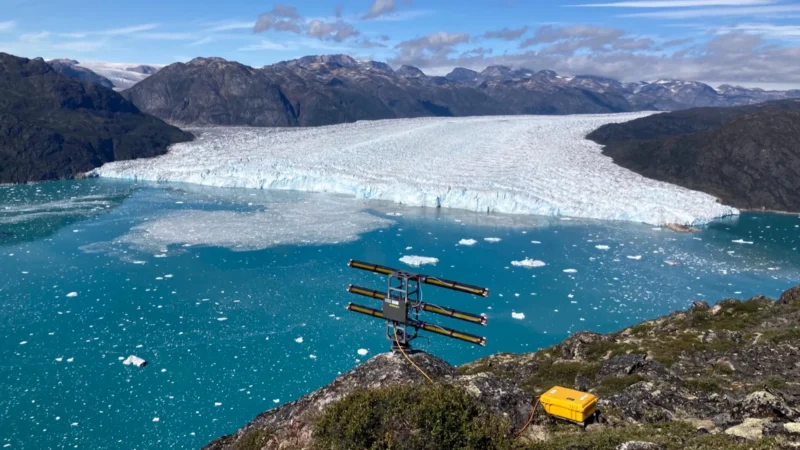Top Highlights
-
Iceberg Calving Contribution: Iceberg calving significantly accelerates the loss of ice from the Greenland ice sheet, with glaciers like Eqalorutsit Kangilliit Sermiat releasing up to 3.6 km³ of ice annually.
-
Innovative Tracking Technology: Researchers employed fiber-optic technology to monitor how falling ice impacts glacial meltwater, allowing unprecedented data collection on glacial erosion and mixing with warmer seawater.
-
Internal Underwater Waves: The study uncovered substantial internal waves that promote mixing of warm seawater with meltwater, leading to increased melting and further calving, creating a “multiplier effect” of glacier erosion.
-
Wider Implications: The research underscores the fragility of the Greenland ice sheet, with potential global sea-level rise and disruptions to major ocean currents posing significant threats to ecosystems and climate stability.
Understanding the Waves That Accelerate Melting
Recent research sheds light on an alarming phenomenon impacting Greenland’s glaciers. Massive hidden waves contribute to the rapid melting of the ice sheet. The process, known as iceberg calving, involves large chunks of ice breaking off and falling into the ocean. This natural event significantly accelerates ice loss. For the first time, scientists have utilized innovative fiber-optic technology to trace how the interaction between melting ice and warmer seawater drives this process.
This research reveals that warm seawater mixes with glacial meltwater beneath the surface, increasing melt and eroding the ice’s base. The interaction amplifies glacier calving, leading to a more significant loss of mass. Understanding these dynamics could reshape how we view glacier stability and climate change impacts. As researchers monitor the effects of these underwater waves, they gain insights into a critical issue affecting global sea levels.
The Broader Implications of Warming Waters
The implications of these findings extend far beyond Greenland. If the Greenland ice sheet were to melt completely, global sea levels could rise by approximately seven meters. Such a scenario would have catastrophic effects worldwide. The influx of freshwater from melting glaciers also threatens major ocean currents, including the Gulf Stream, which regulates Europe’s climate. These changes signal not just ecological disturbance but also potential economic ramifications for coastal communities globally.
Moreover, the fragile ecosystems within Greenland’s fjords face imminent threat. Warmer waters and increased erosion compromise the habitats of various marine species. Scientists emphasize the interconnectedness of our Earth’s systems. If temperatures rise too high, we risk triggering irreversible changes. Every piece of research, including these new findings, serves as a crucial reminder of the urgent need for climate action. Understanding the intricate dance of ice and water not only informs us about glacier dynamics but also about our planet’s future.
Expand Your Tech Knowledge
Dive deeper into the world of Cryptocurrency and its impact on global finance.
Explore past and present digital transformations on the Internet Archive.
TechV1

